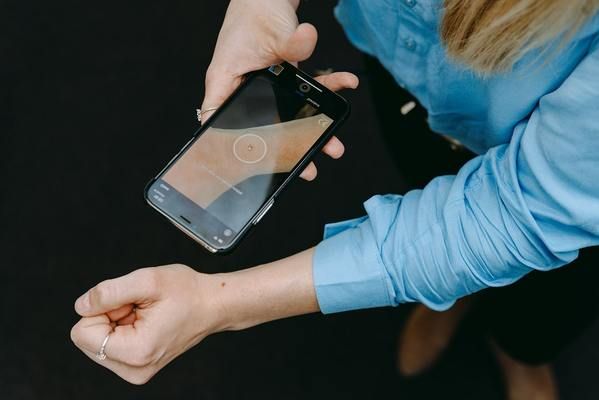
Skin cancer is one of the most common forms of cancer in the UK and rates continue to rise. At least 100,000 new cases are diagnosed in the UK each year, and kills over 2,500 people – that’s seven people every day.
Thankfully, it is a widely preventable disease if you protect yourself from the sun whenever you are spending time outdoors and keep track of any changes to your skin. It is also one of the only cancers with the benefit of being physically noticeable in the earliest stages, meaning we can spot any concerning growths as soon as they appear.
How to check your skin for skin cancer
Those who are particularly susceptible to skin cancer (people with fair skin, red or fair hair or light-coloured eyes) should become familiar with the size, shape and location of the moles on their body. It is recommended that you examine your skin head-to-toe every month. Getting in the habit of checking your skin will help you notice significant changes. After the first few times, a skin self-exam can be completed in no more than 10 minutes – a small investment for a procedure which could be lifesaving.
There are three main types of skin cancer: basal cell carcinoma, squamous cell carcinoma, and melanoma. Each has many different appearances, so it is important to know the early warning signs. Most moles are harmless, but if you do have skin cancer, finding it early is the best way to make sure it can be treated successfully.
What should you be looking for?
When you are examining your skin, you should be looking out for:
- A skin growth that increases in size and appears pearly, translucent, tan, brown, black, or multi-coloured
- A mole, birthmark, beauty mark, or any brown spot that:
- changes colour
- increases in size or thickness
- changes in texture
- is irregular in outline
- is bigger than 6mm or 1/4″, the size of a pencil eraser
- appears after age 21
- A spot or sore that continues to itch, hurt, crust, scab, erode or bleed
- An open sore that does not heal within three weeks.
Even with the above guidance, it can be difficult to determine when you are looking at potential skin cancer or just a harmless spot. The SkinVision app, available to Medicash corporate policyholders, uses AI technology to track the appearance of moles on your body for you.
How to use SkinVision
Simply take a photo of a skin spot or mole with your smartphone and receive a risk indication within 30 seconds. With regular reminders, the app helps you to perform skin self-exams quickly and will alert you instantly to any changes or new marks on your body.
If anything flags up as a concern, SkinVision will provide recommendations on the next steps to take, including whether to visit a healthcare professional. To access this service from Medicash, corporate policyholders just need to follow the link from within their current My Medicash App.
To round off Skin Cancer Awareness Month, Medicash and SkinVision have hosted a webinar highlighting current statistics and demonstrating what you, and your employees, should be looking out for, which you can watch below:
Useful Links:
https://www.macmillan.org.uk/cancer-information-and-support/skin-cancer
https://www.britishskinfoundation.org.uk/what-is-skin-cancer
This post is part of a series of posts about skin cancer for Skin Cancer Awareness Month. You can find the other posts of the series below:
Skin cancer: How to protect your skin whilst enjoying the sun
The UK has 50,000 ‘missing’ cancer diagnoses – could you be overlooking your own symptoms?
Skin cancer awareness: the danger of Dr Google and how to accurately self-diagnose
